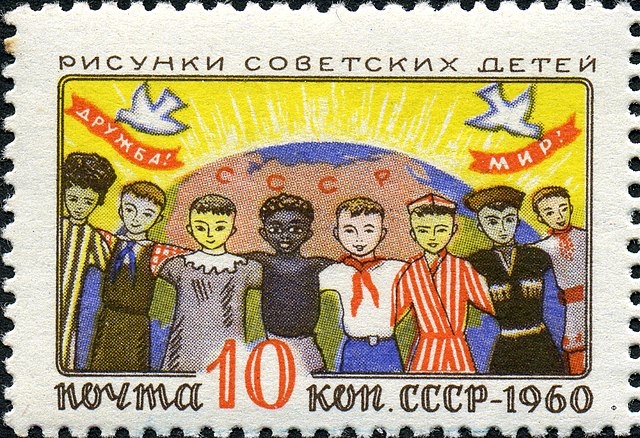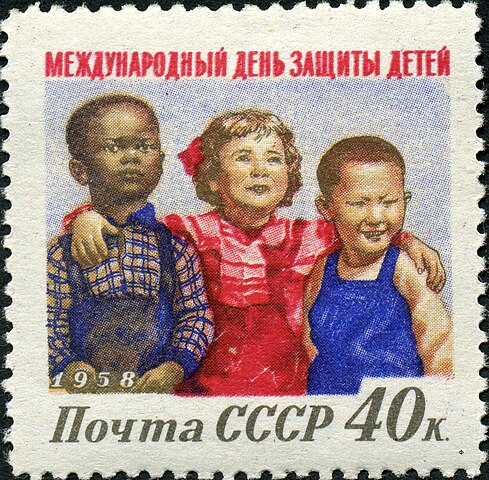
Each 16 November is commemorated as United Nations (UN) International Day for Tolerance.
As the UN website explains,
The United Nations is committed to strengthening tolerance by fostering mutual understanding among cultures and peoples. This imperative lies at the core of the United Nations Charter, as well as the Universal Declaration of Human Rights, and is more important than ever in this era of rising and violent extremism and widening conflicts that are characterized by a fundamental disregard for human life.
The Thammasat University Library collection includes a number of books on different aspects of racial tolerance.
The UN website further notes,
On the day of its fiftieth anniversary, 16 November 1995, UNESCO’s Member States adopted a Declaration of Principles on Tolerance. Among other things, the Declaration affirms that tolerance is neither indulgence nor indifference. It is respect and appreciation of the rich variety of our world’s cultures, our forms of expression and ways of being human. Tolerance recognizes the universal human rights and fundamental freedoms of others. People are naturally diverse; only tolerance can ensure the survival of mixed communities in every region of the globe.
The Declaration qualifies tolerance not only as a moral duty, but also as a political and legal requirement for individuals, groups and States. It situates tolerance in relation to the international human rights instruments drawn up over the past fifty years and emphasizes that States should draft new legislation when necessary to ensure equality of treatment and of opportunity for all groups and individuals in society.
Along with outright injustice and violence, discrimination and marginalization are common forms of intolerance. Education for tolerance should aim at countering influences that lead to fear and exclusion of others, and should help young people develop capacities for independent judgement, critical thinking and ethical reasoning. The diversity of our world’s many religions, languages, cultures and ethnicities is not a pretext for conflict, but is a treasure that enriches us all.
How Can Intolerance Be Countered?
Fighting intolerance requires law:
Each Government is responsible for enforcing human rights laws, for banning and punishing hate crimes and discrimination against minorities, whether these are committed by State officials, private organizations or individuals. The State must also ensure equal access to courts, human rights commissioners or ombudsmen, so that people do not take justice into their own hands and resort to violence to settle their disputes.
Fighting intolerance requires education:
Laws are necessary but not sufficient for countering intolerance in individual attitudes. Intolerance is very often rooted in ignorance and fear: fear of the unknown, of the other, other cultures, nations, religions. Intolerance is also closely linked to an exaggerated sense of self-worth and pride, whether personal, national or religious. These notions are taught and learned at an early age. Therefore, greater emphasis needs to be placed on educating more and better. Greater efforts need to be made to teach children about tolerance and human rights, about other ways of life. Children should be encouraged at home and in school to be open-minded and curious. Education is a life-long experience and does not begin or end in school. Endeavours to build tolerance through education will not succeed unless they reach all age groups, and take place everywhere: at home, in schools, in the workplace, in law-enforcement and legal training, and not least in entertainment and on the information highways.
Fighting intolerance requires access to information:
Intolerance is most dangerous when it is exploited to fulfil the political and territorial ambitions of an individual or groups of individuals. Hatemongers often begin by identifying the public’s tolerance threshold. They then develop fallacious arguments, lie with statistics and manipulate public opinion with misinformation and prejudice. The most efficient way to limit the influence of hatemongers is to develop policies that generate and promote press freedom and press pluralism, in order to allow the public to differentiate between facts and opinions.
Fighting intolerance requires individual awareness:
Intolerance in a society is the sum-total of the intolerance of its individual members. Bigotry, stereotyping, stigmatizing, insults and racial jokes are examples of individual expressions of intolerance to which some people are subjected daily. Intolerance breeds intolerance. It leaves its victims in pursuit of revenge. In order to fight intolerance individuals should become aware of the link between their behavior and the vicious cycle of mistrust and violence in society. Each one of us should begin by asking: am I a tolerant person? Do I stereotype people? Do I reject those who are different from me? Do I blame my problems on ‘them’?
Fighting intolerance requires local solutions:
Many people know that tomorrow’s problems will be increasingly global but few realize that solutions to global problems are mainly local, even individual. When confronted with an escalation of intolerance around us, we must not wait for governments and institutions to act alone. We are all part of the solution. We should not feel powerless for we actually posses an enormous capacity to wield power. Nonviolent action is a way of using that power-the power of people. The tools of nonviolent action-putting a group together to confront a problem, to organize a grassroots network, to demonstrate solidarity with victims of intolerance, to discredit hateful propaganda-are available to all those who want to put an end to intolerance, violence and hatred.

International comparative research
An example of an international comparative research project on tolerance is an article by Professor Ferdinand J. Potgieter, Ph.D., of the Faculty of Education Sciences, Potchefstroom Campus, North-West University (NWU), South Africa.
The article, Perspectives on Tolerance in Education Flowing from a Comparison of Religion Education in Mexico and Thailand, was presented at the Education in One World: Perspectives from Different Nations conference of the Bulgarian Comparative Education Society (BCES) in 2013.
The abstract for Professor Potgieter’s article follows:
This paper investigates religion education (RE) in Mexico and Thailand – two countries from different parts of the world with vastly different populations and cultures. We wanted to learn whether they had tackled similar problems regarding the provision of RE in their schools, particularly with respect to the matter of tolerance in diverse societies, and in which ways the solutions they came up with agree with or differ from each other. We assumed that people are the same the world over, and that their problems regarding the provision of RE in schools and the quest for (inter)religious tolerance might, depending on the prevailing local and historical circumstances, be roughly the same. The paper presents and discusses some of the parallels, resemblances and differences with respect to RE and the issue of (inter)religious tolerance. It ends by tentatively advancing the following four stages of state-church relations that could help us understand (inter)religious tolerance in education: state-church tension and disagreement, state-church mistrust, state-church truce, and recognising the need for religious tolerance.
Its conclusion:
Although Mexico and Thailand are geographically far apart, and as far as could be established, have had no relations, they seem to have struggled with much the same set of problems regarding the provision of RE in their schools. The comparison suggested that distinguishing between the following four stages of state-church relations with regard to RE could help us understand (inter)religious tolerance: state-church tension and disagreement, state-church mistrust, state-church truce, and recognising the need for religious tolerance.

(All images courtesy of Wikimedia Commons)
